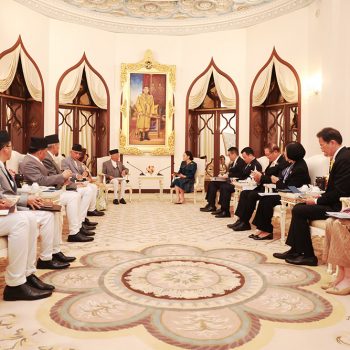Situation of sanitary ware in Nepal and the way forward

Nepal’s trade situation:
Nepal is a country highly dependent on imported goods. As per the data of Nepal Rastra Bank, Nepal imported goods worth Rs 1.5 trillion to fulfill the needs of the people and exported goods worth Rs 141 billions in the fiscal year 2020/21.
Fuels, machinery, steel and iron, cereals, electronic equipment, pharmaceuticals and vehicles are among the highest imported commodities. The actual value of the imports has been increasing every year at more than 20 percent.
Situation of sanitation in Nepal:
According to Nepal’s Census of 2021, there are 6.66 million households in Nepal with 4.47 million of them situated in urban areas and 2.19 million in the rural. Categorizing them by the type of toilets, there are 653,000 households with flush toilets that are linked to the public sewerage, 3.67 million households with flush toilets that have septic tanks, and two million are using pit latrines. This shows the kind of sanitary wares people are using in Nepal.
Remittance and urbanization:
Building toilets and bathrooms and investing in them used to be an afterthought for Nepali people. The trend has changed with the increase in general prosperity. One of the causes of that prosperity is the out-migration for foreign employment. According to the census data of 2021, 2.1 million migrated to foreign countries for green pastures. They have sent the remittance of Rs 961.05 billion in the fiscal year 2020/21, which was an increase of 9.8 percent compared to the previous fiscal year. According to the Nepal Living Standard Survey of 2011, around 80% of remittances are used for daily consumption, followed by loan repayments, household property purchases, education expenses, capital formation activities, and other purposes in Nepal. With the tendency of the remittance money being spent on property in the urban setting, this leads to the new houses with decent level of amenities including sanitary ware being used during their construction.
The 1952/054 census data shows that 2.9 percent of the population resided in 10 urban centers. After 50 years in 2001, urban population reached up to 13.9% with 6.65 percent urban growth rate during the year. Reclassification of urban areas increased urban population to 27.2% by the year 2014; and to 66.2% by the year 2021 with them residing in 293 urban areas. Kathmandu Metropolitan City, which houses most of the federal government’s central offices, issues permits to build 40,000 houses annually. Other major urban centers outside Kathmandu are also increasing rapidly. This shows the trend of urbanization at present and in the coming days.
Trends in the use of sanitary ware – Opportunities and challenges:
Opportunities:
With high ownership of homes by the Nepali population, 86 percent according to Nepal’s Census, 2021, of the people who want a comfortable life, the trends of using sanitary wares have changed. According to the industry insiders, as published in an article in the New Business Age in 2021, “Architects and home-owners are slowly beginning to give priority to bathrooms,” Yogendra Bajracharya of Nepal Marble Bath House, which has been in the sanitary ware business for the last 16 years, said. He adds, “Urban Nepali are becoming increasingly conscious about design and use of space and are even willing to spend big bucks.”
The same article quotes this author, Komal Mainali, Managing Director of Mainali Business Concerns Pvt Ltd, which trades in sanitary wares like jacuzzis, taps, toilet commodes, kitchen sinks, silk plasters and eco-friendly wallpapers among others, as saying “sales of sanitary wares have increased at the rate of 10 to 12 percent annually in the last few years.” Although it might sound counterintuitive to some people, the Nepali market in the urban areas has matured and people are going to pay higher price for and demand higher quality goods and its related services.
Nepal’s sanitary ware industries rely heavily on imports from China, India, Spain and Italy. While custom duty on bathroom installations is low, duty on tiles can reach up to 70 percent. Apartment and hotel construction, renovation of older houses that look for accommodating better furnished modern bathrooms have been helping the amount of sanitary ware being purchased by the consumers to go up. With an increase in urbanization, tendency to use the sanitary ware products in household and other commercial buildings, the prospect of the business is bright for the foreseeable future.
Challenges:
As Nepal’s sanitary ware business is mostly import dependent, other market factors and international relations can impact the amount available and the price that the customers need to pay. Although some products like pipes and tiles are being manufactured in Nepal, they are not enough to fulfill the demand. The government should have a plan to increase manufacturing, first to have the imports substituted and then to begin the exports. The case of the cement industry, which initially replaced imports and then has begun exports to India, could come handy in this regard as a template for the sanitary ware industry as well.
Conclusion:
Nepal has the potential to establish sanitary ware industries. The easy part is to import from abroad but the difficult part is the road access. We, however, should be ready to face such challenges to develop sanitary ware industries in Nepal.
Komal Prasad Mainali is the Managing Director of Mainali Business Concern Pvt. Ltd.














